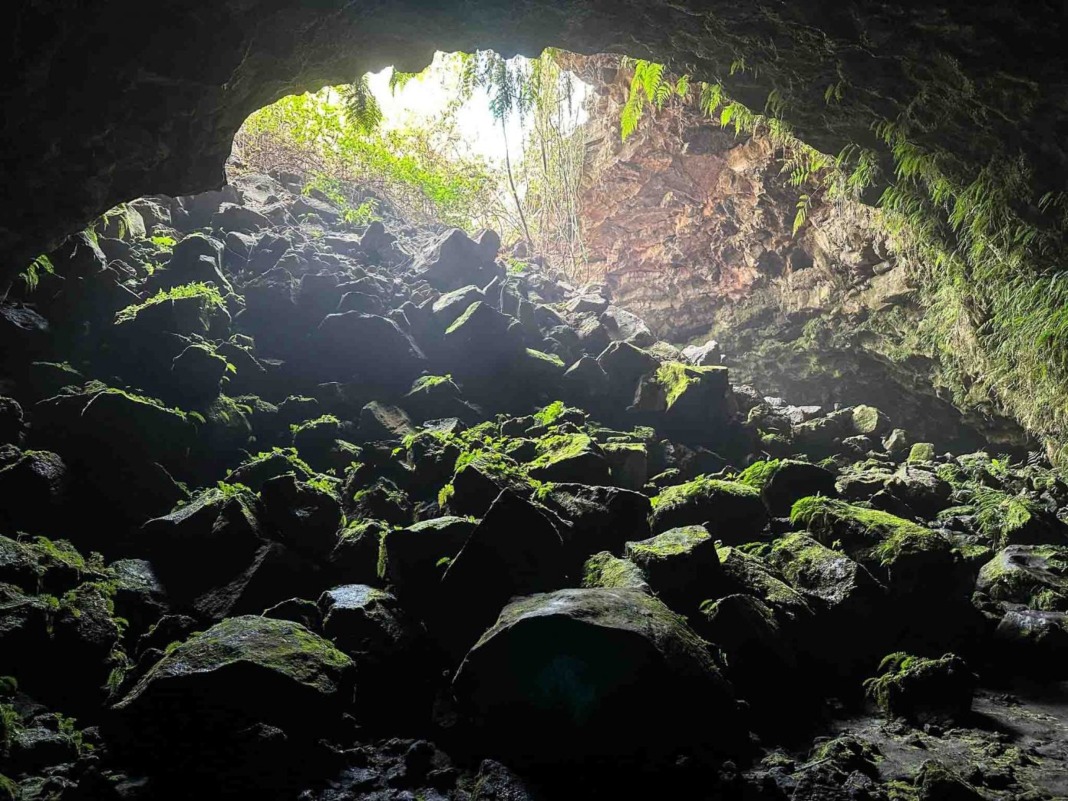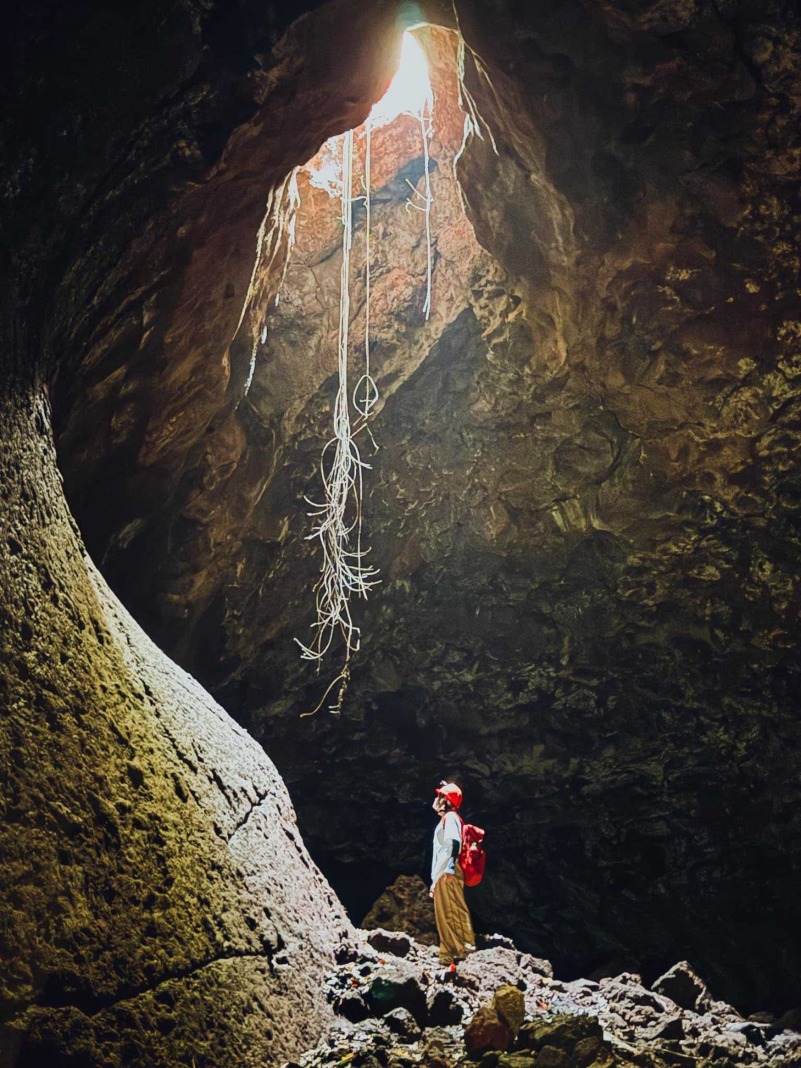Chu B’luk volcanic cave in Dak Nong Province has become an ideal destination for adventure enthusiasts due to its moderate difficulty and the pristine natural beauty it offers.

Chu B’luk volcanic cave was created by flowing lava millions of years ago - Photos: Yen Vi Vu
Chu B’luk volcanic cave, also known as Doi Cave, is located in Buon Choad Commune, Krong No District, Dak Nong Province. Spanning about 25 kilometers, the cave is part of the longest volcanic cave system in Southeast Asia, comprising over 100 caves of varying sizes formed by lava flows millions of years ago.
With a moderate level of difficulty, trekking through the Chu B’luk volcanic cave has become a favorite activity for many tourists. However, reaching the cave entrance is quite challenging, involving traversing steep basalt hills often obstructed by large trees. Therefore, tourists are advised to be accompanied by local guides or knowledgeable companions.


Trekking through the Chu B’luk volcanic cave has become popular among many tourists
The natural landscape surrounding the area is lush with jungle greenery and various types of moss, adding a touch of mystery and wildness. Inside the cave, giant honeycomb rocks of different sizes are enveloped in darkness, with occasional rays of light penetrating through cracks.
Chu B’luk offers numerous activities for tourists. The first challenge is the nine-kilometer trekking route, where breathtaking scenery of blue skies, endless mountains and forests, and poetic nature captivate visitors. Tourists can also cycle through fragrant coffee fields, visit local villages, and explore nearby Dray Nur and Luu Ly waterfalls. Additionally, visitors can camp and have a barbecue amidst the majestic mountains and forests, creating unforgettable moments. Early spring visits offer the chance to participate in local festivals and explore the unique culture of the indigenous people.
To ensure a safe trekking trip and fully appreciate the pristine beauty of Chu B’luk volcanic cave, tourists are advised to visit from December to March when the weather is warm, sunny, and breezy. During this period, lush vegetation, less rain, and beautiful sunlight make the path easier to travel and provide opportunities for stunning photos. Tourists should avoid traveling during the rainy season, as the cave interior can become slippery.
By Gia Nghi